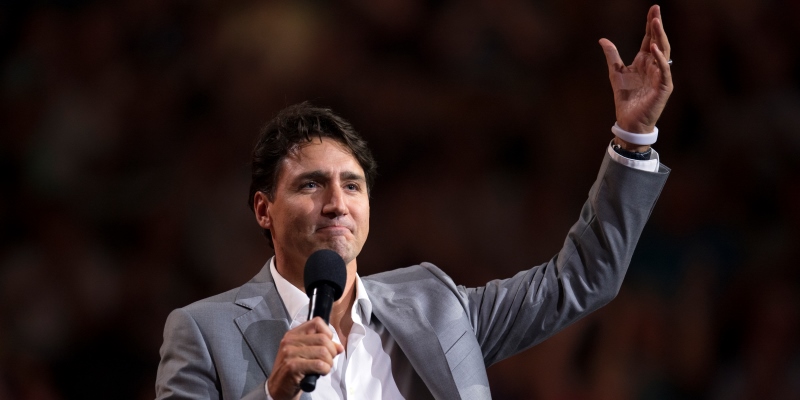Federal spending near record levels in Canadian history

Fiscal prudence is a key aspect of any prime minister’s legacy. The choice to increase the size and role of government (i.e. increasing spending) almost always comes at the expense of larger deficits, mounting debt and/or tax increases. Unfortunately, the federal government under Prime Minister Justin Trudeau has ignored these consequences and is spending at unprecedented levels outside of war or recession.
A recent Fraser Institute study compared per person program spending (inflation-adjusted) by each Canadian prime minister since 1870, providing historical context for program spending and demonstrating that the current government is spending at one of the highest levels in Canadian history.
During Prime Minister Stephen Harper’s last year in office, program spending was budgeted to reach $263.2 billion. This meant per person spending (again, after adjusting for inflation) would be $7,727 in 2015. However, Prime Minister Trudeau immediately increased spending after winning the election in late-2015 and spending grew to $8,117 per person, an increase of more than five per cent in less than six months.
The Trudeau government then ramped up spending even more in 2016, as per person spending reached $8,396. In 2018/19, federal spending is projected to reach $320.2 billion or $8,639 per person. This represents an increase of almost 12 per cent in real per person spending.
For context, the Harper government during the 2009 recession recorded the all-time high level of per person program spending ($8,711). In other words, the Trudeau government is projected to spend only $72 less per person than the all-time high, which was recorded during a deep global recession.
Moreover, federal spending would have been higher had the government delivered on its infrastructure spending commitment. Consistent delays in executing infrastructure spending have increasingly deferred such spending into the 2020s. For instance, Budget 2018 moved $3.6 billion of short-term infrastructure spending to future years. So this government’s record level of per person spending (outside of recession or war) would likely have reached an all-time high if it had delivered on its infrastructure spending promises.
There are two problems (among many) to consider. First and perhaps most obvious is the risk to federal finances of a recession. Revenues decline and spending increases automatically during a recession, before governments take any discretionary actions. On average, Canada has experienced a recession roughly every eight-and-a-half years, and with the last recession recorded in 2008-09, the risks of a recession this year or next are real. Indeed, equity markets are signalling as much now.
An analysis of the potential effects of a recession on federal finances released in 2018 indicated that the annual deficit could easily reach more than $42 billion depending on the depth of the recession and the government response. Given that the Department of Finance currently expects deficits to persist until 2040, a recession this year, given the current deficit, could weigh on public finances for the foreseeable future.
Beyond the risks of deteriorating public finances from over-spending during times of economic growth, there’s also the real question of what benefits Canadians receive from this near-unprecedented level of spending. The same Department of Finance report expects future economic growth to remain below the average levels of the recent past. And as a number of reports have shown, business investment by both Canadians and foreigners is collapsing.
Simply put, the Trudeau government has voluntarily increased spending to a level not seen outside of recession or large-scale military conflict. The risks to current and future federal finances are significant and the benefits to Canadians are not readily apparent.
Authors:
Subscribe to the Fraser Institute
Get the latest news from the Fraser Institute on the latest research studies, news and events.



